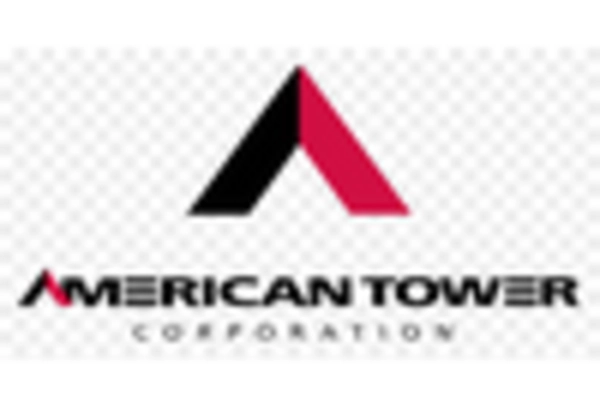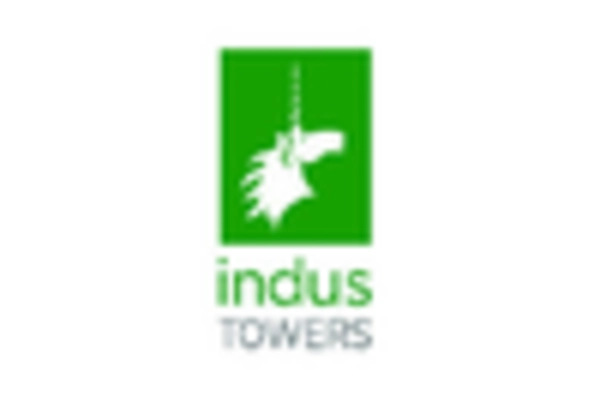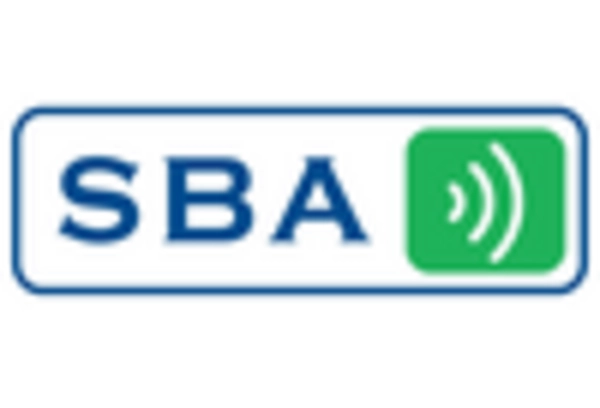5G Network Rollout
The ongoing rollout of 5G networks is a pivotal driver for the Telecom Tower Market. As telecommunications companies strive to provide faster and more reliable services, the deployment of 5G technology necessitates a denser network of telecom towers. This technology promises to deliver significantly higher data speeds and lower latency, which are essential for applications such as IoT, autonomous vehicles, and smart cities. The investment in 5G infrastructure is substantial, with billions allocated for tower construction and upgrades. Reports indicate that the number of telecom towers required for 5G deployment could be two to three times higher than that of 4G networks. Consequently, this transition not only enhances service quality but also catalyzes growth within the Telecom Tower Market, as operators seek to establish a competitive edge.
Increasing Demand for Mobile Data
The Telecom Tower Market is experiencing a surge in demand for mobile data, driven by the proliferation of smartphones and mobile applications. As consumers increasingly rely on mobile devices for communication, entertainment, and information, the need for robust network infrastructure becomes paramount. According to recent data, mobile data traffic is projected to grow exponentially, with estimates suggesting a compound annual growth rate of over 25 percent in the coming years. This escalating demand necessitates the expansion of telecom towers to enhance coverage and capacity, thereby propelling growth within the Telecom Tower Market. Network operators are compelled to invest in new tower installations and upgrades to meet consumer expectations, which in turn stimulates market dynamics and fosters competition among service providers.
Government Initiatives and Regulations
Government initiatives and regulations play a crucial role in shaping the Telecom Tower Market. Many governments are actively promoting the expansion of telecommunications infrastructure to enhance connectivity and support economic growth. Policies aimed at streamlining the permitting process for tower construction and providing incentives for infrastructure investment are becoming increasingly common. For instance, some regions have introduced tax breaks or subsidies for telecom companies that invest in rural or underserved areas. Such initiatives not only facilitate the deployment of new towers but also encourage competition among service providers. As a result, the Telecom Tower Market is likely to benefit from these supportive regulatory frameworks, which aim to improve overall network quality and accessibility.
Rising Internet of Things (IoT) Adoption
The rapid adoption of Internet of Things (IoT) devices is significantly influencing the Telecom Tower Market. As more devices become interconnected, the demand for reliable and extensive network coverage intensifies. IoT applications, ranging from smart home devices to industrial automation, require a robust telecommunications infrastructure to function effectively. The increasing number of connected devices is projected to reach billions in the next few years, necessitating the expansion of telecom towers to support this connectivity. This trend compels telecom operators to invest in additional towers and enhance existing ones, thereby driving growth in the Telecom Tower Market. Furthermore, the integration of IoT with 5G technology amplifies the need for advanced tower solutions, creating new opportunities for market participants.
Technological Advancements in Tower Design
Technological advancements in tower design are transforming the Telecom Tower Market. Innovations such as lightweight materials, modular designs, and enhanced structural integrity are enabling the construction of more efficient and cost-effective towers. These advancements allow for quicker installation and reduced maintenance costs, which are appealing to telecom operators. Moreover, the integration of smart technologies into tower designs, such as remote monitoring and energy-efficient systems, is becoming increasingly prevalent. This shift not only enhances operational efficiency but also aligns with sustainability goals within the industry. As telecom companies seek to optimize their infrastructure investments, the adoption of advanced tower designs is likely to drive growth in the Telecom Tower Market, fostering a more resilient and adaptable network infrastructure.


















Leave a Comment